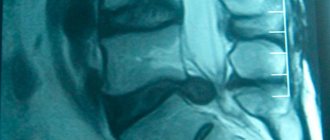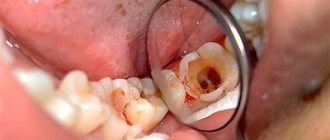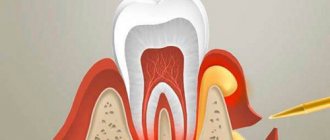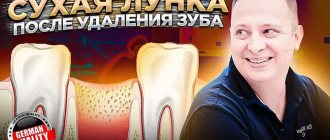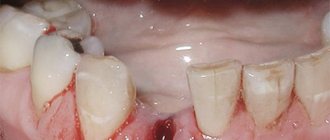- Author:
Naumovich Yulia Yakovlevna - Specialty:
Dentist-orthodontist - Category:
Doctor of the highest qualification category
Learn more about the doctor Get a consultation
Adentia is a complete or partial absence of dentition due to a congenital malformation or acquired/transferred diseases. In turn, complete absence of teeth is very rare. Partial tooth loss is more common, accounting for 45–75% of the total number of dental diseases. Complete edentia is usually associated with age-related changes and occurs in people over 60 years of age. This pathology is unpleasant not only due to a violation of the aesthetics of the smile, but is also primarily dangerous due to serious disturbances in the gastrointestinal tract, deterioration of diction and irreversible changes in the dental system.
Classification of edentia
In dentistry, several types of adentia are differentiated. Based on the time of onset and etiology of the disease, the following are distinguished:
- primary (congenital);
- secondary (acquired);
- edentia of permanent and temporary teeth.
If the patient does not have the rudiments of teeth, he is diagnosed with “congenital adentia.” In some cases, adjacent crowns grow together. And in this case, “false adentia” is diagnosed. Partial edentia means the absence of no more than 10 teeth. Otherwise, a multiple form is observed.
There is also a Kennedy classification of the disease. According to it, the following defects are distinguished:
- double end;
- one-sided end;
- included defect in the lateral areas of the dentition;
- included defect in the anterior part of the dentition.
Treatment of various forms of tooth root resorption
Tooth resorption caused by trauma
This group includes pathological resorptions of dental tissues resulting from acute or chronic trauma (high blood pressure). Damage to the cemento-periodontal complex occurs with activation of osteoclasts. This group of resorptions occurs without infection.
A. Surface resorption
Surface resorption occurs with non-acute tooth trauma.
It is almost impossible to detect x-ray.
From a clinical point of view, this option is the best. Resorption is limited by cementum. Over time, the resulting defect is restored.
Does not require treatment.
B. Transient apical internal resorption
Another form of traumatic, non-infected resorption was discovered by J. Andreasen [5] in 1986, which can occur with incomplete tooth luxation, lateral luxation, orthodontic treatment, and permanent occlusal trauma.
This process is associated with the phenomenon of transient apical breakdown. A transient apical breakthrough appears on a radiograph as a limited area of radiolucency in the apical region of the tooth root [18].
Visually, the tooth crown can be changed in color. The temperature test can be either positive or negative. Often the tooth pulp remains alive.
When the damaging factor is eliminated, the process will likely resolve itself within a few months. It is believed that a positive result is associated with good blood supply to the apical region and the reparative abilities of the pulp. Due to revascularization, self-liquidation of discoloration of the coronal part of the tooth is possible.
Treatment:
wait-and-see tactics. If the return to normal does not occur within six months or the clinic of periodontitis appears, then it is necessary to carry out endodontic treatment followed by obturation of the root canal.
B. Pressure-induced resorption and resorption during orthodontic treatment
An extensive group that includes resorptions caused by prolonged compression: unerupted teeth, neoplasms, incorrect orthodontic treatment.
It is characterized by a loss of hard tooth tissues from the side of the compressive object.
G. B. Ospanova [2], indicates that in adults, resorption of tooth roots during orthodontic treatment occurs more often than in adolescents; more often in women than in men. In patients who have previously undergone orthodontic treatment, resorption develops more slowly than in patients who are new to orthodontic treatment. The main cause of resorption is an overdose of force used to move teeth, the progression of which stops immediately after removal of the orthodontic appliance. With an intact periodontium, cement is formed again and the original shape of the periodontium is restored. However, the apical structure of the root is never restored.
Research by F. Weiland [72] shows that orthodontic forces up to 200 cN are probably not decisive for tooth root resorption.
Treatment
: When mechanical pressure is removed, resorption stops.
D. Replacement resorption (ankylosis)
The most serious form of traumatic, non-inflammatory resorption.
The phenomenon is caused by the death of periodontal cells and damage to the precement (trauma, improper treatment of the tooth during replantation).
There is a slow replacement of tooth tissue with alveolar bone according to the mechanism of typical bone tissue remodeling.
Clinically manifested by loss of physiological tooth mobility. A high percussion sound is possible. The X-ray shows the disappearance of the periodontal fissure. At other times the process is asymptomatic [24].
Treatment:
endodontic treatment does not stop this type of resorption. However, replacement resorption takes a long time. Complete replacement of tooth tissue with alveolar bone can take many years [65]. A wait-and-see approach is recommended, followed by decoronation (removal of the crown part) of the tooth, and after complete root resorption, implantation treatment.
In his works, M. Oliveira [56] coated the surface of the replanted tooth with Emdogain. The drug contains amelogenin and stimulates the restoration of periodontal tissue and non-cellular cement, which prevents the occurrence of replacement resorption.
Tooth resorption caused by inflammation
The reaction of the dentino-alveolar apparatus to infection, characterized by inflammation, can lead to resorption of hard dental tissues. The infection may be of endodontic origin or associated with resorption caused by trauma. Resorptions induced by infection (inflammatory resorptions) can occur inside the root system of the tooth, on the surface of the cementum of the tooth, and combined internal and external lesions are also possible. Resorptions caused by infection can vary widely in complexity but generally have a favorable prognosis if the infectious agent is removed.
A. Internal inflammatory resorption
Internal inflammatory resorption is a destructive process that occurs only within the root canal system and/or dental cavity, characterized by the loss of dentin as a result of the action of osteoclasts [1].
— Apical internal inflammatory resorption
A recent study by F. Vier and J. Figueiredo [69] showed that apical internal inflammatory resorption is much more common in teeth with various inflammatory periapical pathological processes than previously thought. The study showed that 74.7% of teeth with periapical lesions had varying degrees of apical internal resorption.
This study has important clinical implications for root canal preparation. There are two approaches to endodontic treatment with apical internal resorption. The first involves instrumental treatment of the canal to the level of resorption. It is assumed that when microorganisms are removed, the resorbed tissue will be restored.
The second approach is to enlarge and prepare the apical part of the root, including the resorbed area, and then fill the root to the root canal apex [15].
At the moment, there are no studies comparing the long-term results of the two approaches to treating this pathology.
— Intracanal inflammatory resorption
The histological picture of the development of internal resorption has two phases: The first is damage, the second phase is infectious stimulation or maintenance of the resorption process. The etiological factor leads to trauma to the tooth and initiates intrapulpal bleeding (tooth trauma, overheating of the pulp as a result of violation of the preparation rules). The hematoma is organized, that is, replaced by granulation tissue. Proliferating granulation tissue puts pressure on the dentin walls, damaging non-mineralized tissues covering the inner surface of the root canal, the odontoblast layer and predentin. Osteoclasts differentiate from connective tissue and resorption begins [1]. Maintaining this process is possible only if viable areas of the pulp are preserved inside the tooth cavity or if there are large-caliber lateral canals providing blood supply, as well as constant stimulation with an infectious agent [46].
There are studies explaining the transport of pulp resorbing cells from the viable apical part of the pulp [30]. Thus, for the progress of internal resorption, on the one hand, there is a need for a blood supply to viable pulp tissue, which ensures the transport of osteoclasts to the resorption zone, and, on the other hand, an infected part of the pulp, which provides stimulation or progression of resorption [50, 58].
Clinical picture: most often the process is painless; testing for tooth vitality can be positive or negative. Visually, you can see a pink spot within the crown of the tooth.
An x-ray reveals a vacuum in the area of the inner wall of dentin facing the tooth cavity. However, two-dimensional radiography does not cope well with the task of early diagnosis of internal resorption and its differential diagnosis. In cases where the doctor’s capabilities are limited only by this examination method, it is recommended to take a series of photographs of the area of interest in different projections. In the differential diagnosis of external root resorption, it is necessary to pay attention to the relationship between the shadow of the root canal and/or tooth cavity and the radiological focus of clearing, which represents the site of resorption. While maintaining the contours of the shadow of the root canal and/or tooth cavity, against the background of the shadow of the focus of enlightenment, resorption is external. In the case when the boundaries of the radiographic shadow of the root canal sharply disappear or are deformed against the background of a focus of radiological clearing, we are talking about internal resorption. Currently, it is preferable to use cone beam computed tomography (CBCT) to diagnose internal resorption [1, 9].
Treatment:
Features of the pathological process help to understand that it is possible to stop resorption only with the complete elimination of pulp tissue - both viable in the apical part of the tooth cavity and infected.
In the presence of internal resorption, we follow the standard protocol for endodontic treatment of the root canal with copious rinsing with sodium hypochlorite. The changed root system configuration must be taken into account. To influence untreated areas of the canal, temporary filling of the canal with liquid calcium hydroxide is proposed for a period of no more than 2 weeks [3, 46]. For obturation, a combined technique should be used: the apical part of the root below the resorption areas is filled using the lateral condensation method, and then using the hot gutta-percha method.
B. External inflammatory resorption
This type of resorption is extremely aggressive and usually occurs when infection superimposes trauma - after replantation or tooth luxation.
The presence of infection on the root surface causes a normal inflammatory response, including activation of clastic cells, leading to resorption. The process is asymptomatic.
Radiographically, external inflammatory root resorption appears as cup-shaped defects in the tooth root and adjacent bone [6].
The process can also be induced by endodontic pathology. This requires the presence of the following conditions: damage to predentin, cementum and cement with a violation of the sealing of the dentinal tubules, as well as complete necrosis of the pulp with infection of the root system of the tooth.
Bacterial toxins present from the dentinal tubules enter the periodontium [65]. A normal inflammatory response occurs, including activation of osteoclasts. The process is supported by a constant supply of microbial agents, which leads to resorption of both tooth and bone. This mechanism occurs more aggressively in young teeth due to the large diameter of the dentinal tubules [30].
Treatment
: The main effect should be focused on removing the infectious agent that supports osteoclast activity. Endodontic treatment is carried out using the method described above.
B. Combined internal and external inflammatory root resorption
Occurs when internal inflammatory resorption has spread to the outer surface of the root.
Radiographically, this pathology appears as a focus of radioluminescence in the internal structure of the tooth, extending to the outer surface of the root and surrounding bone.
Treatment:
On the first visit, we perform endodontic treatment of the root system with copious rinsing of sodium hypochlorite, close the perforation with MTA-based material and perform temporary filling of the canals with calcium hydroxide for 14 days.
On the second visit, provided that the MTA material has hardened and tightly covers the perforation area, we will obturate the root system using a combined filling technique.
Hyperplastic invasive tooth resorption
The third group of tooth resorptions is the most aggressive and difficult to treat. With this pathology, uncontrolled growth of resorptive tissue occurs, destroying the hard tissues of the tooth. The histological picture is similar to some fibro-osseous lesions, such as fibrous dysplasia [70].
A distinctive feature of hyperplastic resorptions is the fact that for treatment it is not enough to remove the causative factor. Only complete elimination of resorptive tissue helps stop the process. It is assumed that a high percentage of relapses is associated with invasive tissue growth—communications with the periodontium and the main source of resorptive tissue growth are formed in dentin [33].
Although these resorptions are not considered neoplastic processes, their aggressive characteristics are similar in some manifestations.
Hyperplastic invasive resorptions can be of pulpal (internal) or periodontal (external) origin.
Correct diagnosis of the type of resorption and the location of the resorption are critical to the choice of treatment to combat internal and external invasive tooth resorptions.
A. Internal invasive (replacement) tooth resorption
Internal replacement (invasive) tooth resorption is a relatively rare type of resorption [71], which clinically manifests itself as a pink spot on the crown of the affected tooth. The clinical manifestation is due to the fact that the resorptive tissue has already destroyed a significant amount of enamel and dentin, showing through the remaining hard tissues of the tooth.
The etiological factor of internal invasive resorption is trauma. The lesion can be isolated by the root system of the tooth, but in most cases there is communication with the periodontium.
On the radiograph it appears as a violation of the configuration of the root canal with uneven edges or its expansion in the form of an oval focus of radiolucency.
B. Invasive coronal tooth resorption
This rare condition usually develops during teething. The presence of a defect in the coronal enamel contributes to the invasion of hyperplastic resorptive tissue from the periodontium. The cause may also be trauma to temporary teeth with damage to the rudiments of permanent teeth.
Radiographically, it is defined as a defect of the coronal part in the form of an oval-shaped focus of radiolucency with uneven edges.
Treatment is aimed at complete removal of all resorptive tissue and restoration of the coronal defect. This can be achieved by preparing the defect with burs and hand instruments.
B. Invasive cervical tooth resorption
Invasive cervical resorption (ICR - invasive cervical resorption) is characterized by a cervical location. This resorptive process can occur in any tooth in the permanent dentition [34].
If left untreated, invasive resorption leads to destruction and significant loss of dental hard tissue.
Invasive cervical resorption, as a rule, is painless if there is no secondary infection.
Resorption of coronal dentin and enamel often creates a clinically pinkish color in the coronal area. In the absence of external signs, diagnosing this pathology is difficult and most often occurs by chance during routine radiography.
When diagnosing this disease, a high percentage of errors remains. This is related to early descriptions by Gaskill in 1894 and Mummery [48] in 1920, which included teeth with “pink spots” in the group of internal resorptions.
The exact cause of invasive cervical resorption has not been identified, but the following predisposing factors have been identified: intracoronal bleaching, orthodontic treatment, trauma, periodontal treatment, defects in the development of hard dental tissues, bruxism.
G. Harrington and E. Natkin [30], in 1979, recorded intracoronal bleaching as the strongest risk factor, followed by other factors such as trauma, orthodontics, orthognathic surgeries, etc.
G. Heithersay, in his study of 222 patients with 257 teeth affected by ICR, analyzed the effectiveness of risk factors, causing them in isolation or in combination with each other. His analysis shows that orthodontics is the most common single factor causing ICR in 47 (21.2%) patients with 62 affected teeth, followed by intracoronal bleaching in 33 (14.9%) patients, trauma in 31 (14%) patients with 39 affected teeth and periodontal operations in 13 (5.9%) patients.
Other factors had very low frequencies. Bleaching combined with trauma was the cause in 2 (0.9%) patients, whereas bleaching with orthodontics was responsible in 4 (1.8%) patients [32].
Invasive cervical resorption expands first coronally and then apically, surrounding the root canal. The pulp usually remains imperforate and healthy due to the presence of a non-mineralized layer of predetiin [28, 34]. However, with long-term lesions, the canal can be perforated by advancing resorptive lesions [34].
Radiographic features of such lesions: a clear focus of radioluminescence, sometimes exceeding the contour of the pulp, while the contours of the canal remain clear [34].
Prevention of edentia
By following simple preventative measures, you can avoid serious health complications that can be associated with edentulism. Thus, the risk of developing primary adentia in the fetus can be minimized by strictly following the rules even at the stage of pregnancy planning and immediately at the time of bearing the child. It is necessary to monitor calcium levels and eat enough foods rich in this element for the normal development of the baby. If your child has not been teething for a long time, it is necessary to make an appointment with a pediatric dentist.
To prevent acquired adentia, doctors recommend regularly visiting the dental office for examinations, as well as thoroughly cleaning the oral cavity twice a day and professional sanitation at least once every six months. If for some reason several teeth have already been lost, then you should not hesitate with prosthetics or implantation. It is necessary to find out the cause of tooth loss and eliminate it, restoring the integrity of the dentition.
Causes of edentia
The causes of gaps in the dentition can be explained by congenital developmental disorders. In this case, primary adentia is observed due to an anomaly in the embryogenesis of dental tissue. In this case, the rudiments of teeth simply do not form. There is also a hereditary factor for the disease, in which there are problems with the eruption and formation of impacted teeth.
However, the most common cause of secondary adentia is caries and periodontal pathology. Common reasons for tooth extraction are:
- therapeutic treatment errors;
- the presence of chronic inflammation;
- destruction of the crown by more than 50%;
- cyst formation;
- necrosis of hard tooth tissues;
- neoplasms in the jaw.
We know how to cure adentia
In the near future, a medical coordinator will contact you and advise you on the conditions and cost of treatment, select a doctor and make an appointment for you.
| Make an appointment | Or call us +375 29 699-03-03 +375 33 319-03-03 |
Pathogenesis of resorption
The resorption process is associated with osteoclasts [14]. Osteoclasts are large multinucleated cells that are found on the surface of hard tissues in lacunae ( Howship 's lacunae
), or crypts.
They are very mobile and have visible pseudopodia. Osteoclasts differ from other multinucleated cells in that they are located on the surface of bone/dentin, in direct contact with the tissue. The osteoclast has a pronounced ruffle border
. This was first described in 1956 [61]. In the zona fimbriatum, intracellular vesicles fuse with the cell membrane and then release hydrogen ions and proteolytic enzymes into the resorptive space between the cell and the tissue surface [11]. This environment is very acidic, and as a result, calcium dissolves (leaches) from hard tissues. The zona fringe is tightly attached to the surface of the bone by integrin. Integrins are heterodimeric receptors involved in cellular processes such as migration, adhesion, proliferation, differentiation and cell survival [74]. Integrins in the zona fimbriae of osteoclasts interact with ligands to link the cells to the extracellular matrix of the root/bone, thereby isolating the resorptive region. Integrins also play an important role in transmitting information between cells [38]. The cytoplasm of the cell contains an array of organelles that are closely associated with active digestive roles, including the extensive endoplasmic reticulum, Golgi apparatus, ribosomes, and extensive collections of intracellular vesicles that migrate toward the zona fimbriae.
Osteoclasts are the main factor of resorption and can resorb bone, cartilage and, above all, in the context of this article, dentin. Odontoclasts and osteoclasts have similar modes of action but act in different locations. In this work, the term osteoclast will be used.
The exact origin and stimulation of osteoclasts are not fully understood. Several theories have been proposed.
It is known that the following signaling molecules take part in the formation and regulation of osteoclast activity:
M-CSF ( macrophage colony-stimulating factor
) - granulocyte-macrophage colony-stimulating factor. This cytokine is secreted by osteoblasts and affects hematopoietic stem cells, stimulating their differentiation into macrophages. M-CSF also has a paracrine effect on osteoclasts (binds to osteoclast receptors, inducing differentiation).
RANKL ( Receptor activator of nuclear factor kappa-B ligand)
- membrane protein, cytokine of the tumor necrosis factor family. Secreted by osteoblasts and stromal cells. Receptors for RANKL are found on the surface of monocytes. They are believed to be involved in stimulating macrophages and mononuclear cells to differentiate into osteoclasts. RANKL is important in the development and function of osteoclasts [49].
Osteoprotegrin or osteoclast inhibitory factor (OPG/OCIF) is a glycoprotein and also belongs to the tumor necrosis factor family. It is also secreted by osteoblasts and stromal cells, but inhibits RANKL [75, 76].
Thus, osteoblasts play a huge role in the activation of osteoclasts (secretion of RANKL and M-CSF activates osteoclasts and promotes resorption, and secretion of OPG prevents). Secretion of RANKL can be stimulated by parathyroid hormone, vitamin D3 and interleukin-1B [36, 37].
Interleukin-1 B is an integral part of inflammatory processes. It has been proven that interleukin-1B is closely related to the resorptive process of hard dental tissues associated with periapical and periodontal pathology [63, 64]. There is an assumption that patients with deviations in the interleukin-1 B allele have a genetic predisposition to resorptive processes [31].
Also, the resorptive process can be caused by the presence of bacteria. Complement proteins, bacterial toxins and antibodies from B lymphocytes attract white blood cells. Although not all chemical mediators of inflammation found in the pulp and periapical tissues are associated with osteoclastic activity, they are chemoattractants for leukocytes [39]. Leukocytes differentiate into osteoclasts in the presence of certain bacterial lipopolysaccharides. Treponema, Porphyromonas possess such surface lipopolysaccharide antigens
and
Prevotella
[16, 17, 55].
The destruction of the organic component (collagen matrix) of bone tissue and dentin occurs due to the activation of enzymes: collagenase, matrix metalloproteinase and cysteine proteinase. It is believed that the enzymes are initially incorporated by osteoblasts into the structure of dentin or bone tissue. However, their activation occurs only upon direct contact with osteoclasts, due to changes in the pH of surrounding tissues.
Osteoclasts are involved in maintaining normal homeostasis and tissue repair. For example, parathyroid hormone stimulates resorption to increase circulating calcium levels: a normal response to decreased blood calcium levels [22].
From a dental point of view, physiological resorption is an extremely important process in the replacement of temporary dentition. There is a constant balance between osteoclastic activators and inhibitors. When tissue damage occurs, cytokines are produced and the repair process involves osteoclast activity. The RANKL system is believed to be an integral part of restoration in dental hard tissues [45].
If extensive damage to tooth tissue has occurred, complete resorption may occur.
At the histological level, resorption of tooth root cement due to microdamage occurs constantly. However, when the provoking or causative factor disappears, it is restored. There are biological defense mechanisms to prevent normal tooth resorption (healthy tissues of the periodontal ligament, cementum, cementum and extracellular layer of predentin).
Cementum and periodontal ligament are barriers to external root resorption, and the presence of predentin is a barrier to internal resorption.
Damage to these barriers allows osteoclasts to attach to the root surface, and in the presence of inflammation, resorption of dental hard tissue occurs. Clinically significant damage can only occur with constant stimulation of osteoclastic activity.
Depending on the etiological factor, pathological tooth root resorption can manifest clinically in different forms and will require different treatment approaches.
Symptoms
Symptoms of primary adentia
Congenital absence of teeth is an extremely rare disease. This pathology is revealed in the deformation of the facial skeleton:
- shortened upper lip;
- disproportionate facial height;
- pronounced supramental fold.
Against this background, there is dryness of the mucous membrane and pallor of the integument, and problems with pronunciation. Children with this diagnosis also have problems with underdeveloped nail plates, they have little hair, no eyebrows, the fontanelle does not heal well and the palate is flat.
Partial primary adentia can develop due to the absence of some primary teeth. During the examination, the doctor diagnoses that they cannot be felt and are not visible on X-ray images. In this case, the patient has large gaps between the existing teeth, which leads to displacements of the entire row. If a lot of teeth are missing, the doctor may even diagnose underdevelopment of the jaw.
Symptoms of secondary adentia
The absence of teeth in the lower and upper jaw is a consequence of their surgical removal due to oncology, periodontitis or advanced forms of caries. In this case, atrophy of the alveolar processes occurs, and the lower jaw moves towards the nose.
Partial tooth loss is the most common phenomenon, as more than 70% of people experience it. In this case, teeth are removed due to periodontitis or advanced caries. Lack of proper therapy leads to dangerous complications:
- formation of a traumatic node;
- tissue destruction;
- formation of pockets near teeth;
- retraction of the upper lip and cheeks;
- dislocation of the temporomandibular joint.
Causes
Edentia in adults
Congenital absence of teeth in adults is rare and is caused by damage or death of tooth buds in the prenatal period.
Acquired adentia occurs for reasons that led to tooth loss. These include:
- injuries to teeth and jaw;
- untimely and irrational treatment of caries;
- inflammation of the pulp and periodontium;
- periostitis;
- inflammation of the soft tissues of the jaw;
- systemic and endocrine diseases (diabetes mellitus, hypothyroidism);
- disturbances of mineral metabolism.
Adentia in children
Adentia in children can be congenital and acquired, as well as complete and partial (if up to 10 milk teeth are missing).
Congenital develops as a result of the influence of unfavorable factors during the formation of teeth (at 7, 10 and 17 weeks of pregnancy). Complete absence of teeth in children is a rare pathology, which is usually combined with damage to the eyes, hair, nails, and sweat glands.
The causes of congenital adentia include pathological conditions of the mother during pregnancy:
- disorders of mineral metabolism;
- treatment with teratogenic drugs (antitumor, antiretroviral, ionizing radiation);
- endocrine disorders;
- osteomyelitis, inflammation of the jaw.
Acquired absence of teeth in childhood is associated with the presence of multiple foci of caries and its complications.
Diagnosis of edentia
Making a diagnosis does not require serious research or additional tests. A careful visual examination by a specialist and an x-ray of the jaw are sufficient.
Additional examinations may be needed to identify factors that interfere with prosthetics:
- inflammatory process;
- tumor;
- damage to the oral mucosa;
- exostosis.
During the examination, the doctor pays special attention to clarifying the nature of the origin of adentia - primary or secondary. For this purpose, radiography is usually prescribed.
Treatment of adentia
Restoration of the dentition in case of edentia is carried out by installing dentures. For this purpose, the patient is offered removable plate, bridge or clasp dentures.
Bridge-like fixed prostheses
Orthodontic structures that are attached to the supporting teeth in the jaw and replace missing units, performing their chewing function. Treatment of edentulism with the help of these prostheses allows you to restore a person’s nutritious diet, eliminate problems with diction and restore the aesthetics of a smile.
Removable plate dentures
Plate dentures are installed on existing teeth, evenly distributing the chewing load and pressure on the jaw. The method demonstrates an effectiveness of 60–80%, since wearing a prosthesis requires developing a habit within 2 months, as well as some restrictions in eating your favorite foods. This treatment option is recommended to eliminate phonetic defects in pronunciation and restore the attractiveness of a smile.
Clasp dentures
The support for these dentures is the mucous membrane and natural teeth. The special design promotes uniform distribution of chewing pressure and is characterized by biocompatibility and hygiene. Clasp dentures help eliminate all defects in the dentition.
Methods for diagnosing and treating partial adentia
Partial adentia is not accompanied by pain. Mostly, patients complain of inconvenience when chewing, speech impairment, and aesthetic defects. Pathology is diagnosed during a visual examination by a dentist. The remaining data for treatment planning is obtained after X-rays and orthopantomography. The purpose of dental diagnostics is to assess the condition of the oral cavity, examine the bite, determine the causes of adentia and the degree of impairment of chewing function. If during the examination inflammatory processes, tumor diseases, exostosis and serious lesions of the oral mucosa are detected, treatment is postponed.
In case of complete or partial edentia, tooth restoration is carried out using two methods: implantation and classical prosthetics. The first method is a priority, since only an implant can fully replace the tooth root and prevent bone tissue atrophy. On the other hand, implantation is not always possible due to contraindications and the patient’s simple lack of funds. In this case, classic prosthetics is the only way out.
Fixed bridge prosthesis
This is the most popular option when restoring one or more missing teeth in a row. The prosthesis is attached to supporting healthy teeth or telescopic crowns. Often, when restoring one tooth, a depression is made in the adjacent teeth, after which the structure is connected with a special bridge, which is fixed using composite materials (Maryland prosthesis). The bridge can be metal, metal-ceramic and ceramic (for restoring the frontal group of teeth).
The main advantages of prosthetics:
- relative durability;
- lower cost compared to implantation;
- good functional performance.
Disadvantages include the need to grind adjacent teeth, possible allergies to metal components, and mediocre aesthetics.
Dental crown and bridge on implants
It is used for a single defect and in the same situations as a classic bridge, but supported by implants rather than adjacent teeth.
- good aesthetics and functionality;
- preservation of bone tissue volume at the implantation site;
- durability.
- high price.
Removable and conditionally removable dentures on implants
They are installed in the case of multiple edentia, when the doctor removes the remaining teeth and places a structure supported by implants that completely imitates the jaw. The type of prosthesis (removable or conditionally removable) depends on the method of attachment. The push-button fastening allows you to remove the prosthesis from the mouth yourself. When using a beam fastening (implants are connected to each other with a special beam), the prosthesis is removed only in the dentist’s office.
- reliability;
- good functionality and acceptable aesthetics;
- durability (an old prosthesis changes after 7 - 10 years, implants can last for life).
- The disadvantages of removable and conditionally removable prosthetics on implants include the need to remove remaining teeth and high cost.
